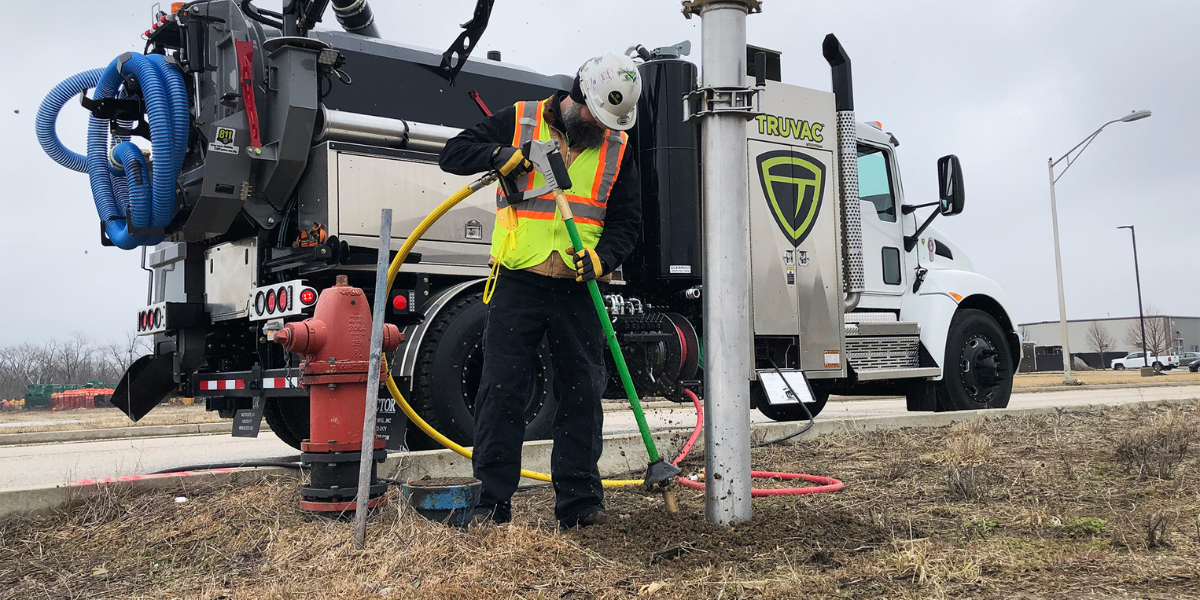
This article was published in the 2024 Excavation Safety Guide.
When it comes to underground utilities, safety is paramount. As municipalities grow and various areas undergo advancement and development, the number of buried utilities grows. Likewise, the number of potential problem points grows, including more live and abandoned utilities interfering with new projects.
Subsurface Utility Engineering, or SUE, looks to counteract these pain points or at least decrease them through civil engineering, surveying and vacuum excavation. Greg Jeffries is the Chair of the Subsurface Utility Engineering & Investigative Committee at the American Society of Civil Engineers Utility Engineering and Surveying Institute (ASCE/UESI).
“SUE, to me, is the proper characterization of existing utilities and avoidance of utility conflicts,” said Jeffries. “Primarily SUE should be integrated in the early design process to give the design people the best foot forward. The idea is to give them very valid, precise information.”
In years past, SUE happened far into the process. It was a matter of finding out how bad an underground obstacle was rather than being used early in the design phase to help avoid surprises. SUE now considers not only utilities but also underground vaults and manholes to give a full-picture look at what is occurring in that underground space and show existing structures.

For example, in Tampa, Florida, when a 72” drainage trunk line was going to be put into an old cobblestone street, the underground structures in addition to the utilities caused issues. SUE showed the pipe wouldn’t work there, and the project would have been better served had SUE been utilized in the design stage.
"SUE as a whole isn’t about eliminating risk such as encountering utility issues, but rather it’s about drastically lowering the risk profile,” said Jeffries. “There’s a precision design when SUE is used, and it’s a buildable design.”
The vast majority of contracts put responsibility on the contractor to confirm all utilities. That puts every construction dollar at risk because there isn’t good subsurface information.
“All construction projects cost roughly 14% more than they should cost because of these unmitigated risk profiles that are being dealt with on the contractor side of the equation,” said Jeffries.
It’s not only a matter of cost and dealing with problems in the build phase rather than the design phase. It’s also a matter of safety. Digging into a utility creates a large safety risk. This is especially the case when working around natural gas lines.
“Safety is definitely the big consideration in SUE. It’s no question,” said Jeffries. “The more information we know about the utility installations that are out there, the more we can avoid an unnecessary or unwanted interaction with that utility.”
That is one major reason why vacuum excavation is helpful when it comes to SUE. Rather using a shovel or backhoe to find out what lays beneath the surface, vacuum excavators use compressed air or pressurized water to uncover underground utilities. That loose soil is then vacuumed out of the way into a debris tank. This helps avoid any contact with utilities. The potholing technique also helps confirm the location, depth, and type of buried lines before construction begins.
Safety and risk avoidance are not the only benefits, though. Vacuum excavation also helps increase the speed of jobs because it identifies precise locations of utilities. Likewise, when SUE is incorporated in the design phase rather than the build phase, time is saved.
“SUE goes beyond safety in the idea of having a more functional design and buildable project,” said Jeffries. “We call it concept to concrete time. If I have a more complete design without unforeseen conflicts, that’s a much shorter window for building. That’s time and money and less traffic interruptions. There’s a number of factors that SUE provides answers to.”
Excerpts taken from the Underground Infrastructure article titled, “Damage Prevention and Safety: SUE, Vac Excavation Increase Safety and Save Time”

![ESM Sidebar Ad[87] ESM Sidebar Ad[87]](https://excavationsafetyalliance.com/hubfs/ESM%20Sidebar%20Ad%5B87%5D.gif)



Comments